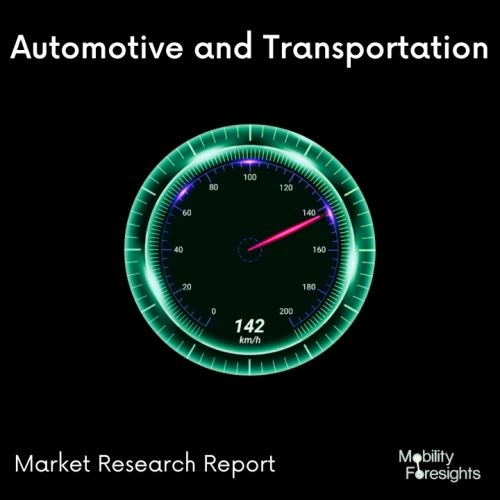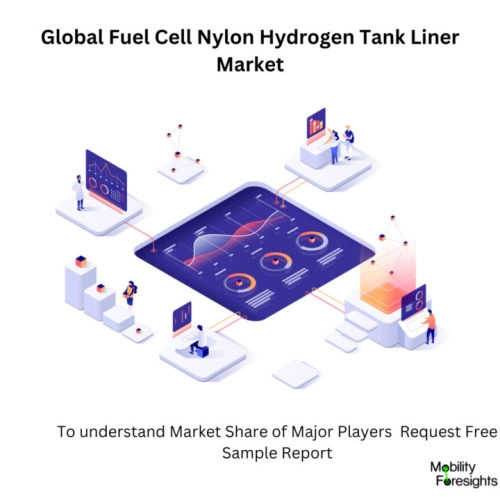
- Get in Touch with Us

Last Updated: Apr 25, 2025 | Study Period: 2023-2030
GLOBAL FUEL CELL NYLON HYDROGEN TANK LINER MARKET
INTRODUCTION
composite, fibreglass/aramid, or carbon fibre-based tanks with a metal liner (aluminium or steel). Max. approximations in pressure: aluminium/glass 305 bars of aluminium, 438 bars of aramid, and 700 bars of carbon.
A fuel cell is an electrochemical device that uses two redox processes to transform the chemical energy of a fuel (typically hydrogen) and an oxidising agent (commonly oxygen) into electrical energy.
In contrast to most batteries, fuel cells require a constant supply of fuel and oxygen (often from air) to sustain the chemical reaction. In contrast, a battery typically derives its chemical energy from materials that are already present in the battery. As long as fuel and oxygen are available, fuel cells can constantly create electricity.
GLOBAL FUEL CELL NYLON HYDROGEN TANK LINER MARKET SIZE AND FORECAST

The Global Fuel Cell nylon hydrogen tank liner market accounted for $XX Billion in 2022 and is anticipated to reach $XX Billion by 2030, registering a CAGR of XX% from 2023 to 2030.
RECENT DEVELOPMENTS
Hyosung creates nylon for hydrogen storage tanks. It's anticipated that interest in nylon as a hydrogen container lining material will increase. With its own technology, Hyosung TNC has been successful in creating and utilising nylon for the fuel tank lining of hydrogen-powered vehicles. The inside container of the fuel tank needs a liner as a fundamental part to store hydrogen and stop leaks. In terms of weight, gas barr
ier, and impact resistance, nylon from Hyosung TNC outperforms traditional metal and high-density polyethylene (HDPE) liner materials.The nylon liner material created by Hyosung TNC is 70% lighter than metal and 50% lighter than HDPE, and it also has a 30% greater gas barrier property than metal and a 50% higher gas barrier property than metal HDPE.
In contrast to nylon liner, which has low hydrogen absorption and air permeability and no risk of becoming brittle when exposed to hydrogen for an extended period of time, metal liner is heavy and has a high risk of brittleness when exposed to hydrogen.
When operating at 400 bar, HDPE liners are used as high-pressure containers, but they are unable to withstand the 700 bar pressure needed by most hydrogen electric vehicles.
The nylon liner has high impact resistance against it from -40 to 85 degrees Celsius. In addition, the hydrogen container liner must be able to endure quickly changing temperature fluctuations induced by frequent charging and discharging of hydrogen.
COMPANY PROFILE
THIS REPORT WILL ANSWER FOLLOWING QUESTIONS
| Sl no | Topic |
| 1 | Market Segmentation |
| 2 | Scope of the report |
| 3 | Abbreviations |
| 4 | Research Methodology |
| 5 | Executive Summary |
| 6 | Introduction |
| 7 | Insights from Industry stakeholders |
| 8 | Cost breakdown of Product by sub-components and average profit margin |
| 9 | Disruptive innovation in the Industry |
| 10 | Technology trends in the Industry |
| 11 | Consumer trends in the industry |
| 12 | Recent Production Milestones |
| 13 | Component Manufacturing in US, EU and China |
| 14 | COVID-19 impact on overall market |
| 15 | COVID-19 impact on Production of components |
| 16 | COVID-19 impact on Point of sale |
| 17 | Market Segmentation, Dynamics and Forecast by Geography, 2023-2030 |
| 18 | Market Segmentation, Dynamics and Forecast by Product Type, 2023-2030 |
| 19 | Market Segmentation, Dynamics and Forecast by Application, 2023-2030 |
| 20 | Market Segmentation, Dynamics and Forecast by End use, 2023-2030 |
| 21 | Product installation rate by OEM, 2023 |
| 22 | Incline/Decline in Average B-2-B selling price in past 5 years |
| 23 | Competition from substitute products |
| 24 | Gross margin and average profitability of suppliers |
| 25 | New product development in past 12 months |
| 26 | M&A in past 12 months |
| 27 | Growth strategy of leading players |
| 28 | Market share of vendors, 2023 |
| 29 | Company Profiles |
| 30 | Unmet needs and opportunity for new suppliers |
| 31 | Conclusion |
| 32 | Appendix |